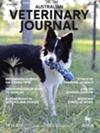Blood culture isolates and antimicrobial sensitivities from 1621 critically ill neonatal foals (2005–2022)
Abstract
Introduction
Sepsis is a leading cause of morbidity and mortality in neonatal foals. Administration of appropriate antimicrobials and early aggressive supportive treatment is central to the efficacious treatment of neonatal sepsis and has proven to positively influence outcomes. The primary aim of our study was to evaluate microorganism results and antimicrobial sensitivities of neonatal foals with a positive blood culture submitted to our intensive care unit (ICU) during 2005–2022. The secondary aim was to compare the results to those of a similar previous study performed at the same ICU during 1999–2004.
Materials and methods
Retrospective analysis of bacterial blood culture results from neonatal foals ≤7 days of age admitted to Scone Equine Hospital between 2005 and 2022 was analysed. Samples were collected at admission. Antimicrobial sensitivity testing was assessed using the Kirby–Bauer disc diffusion method. Susceptibility results from the two study periods were compared using Fisher's exact tests. Statistical significance was achieved at P value <0.05.
Results
From 1621 blood cultures submitted, 380 returned a positive result (380/1621; 23.4%). A total of 402 bacterial isolates were recovered: 55.5% Gram-positive isolates (223/402), 42.6% Gram-negative isolates (171/402) and 1.7% anaerobic isolates (7/409). A significant increase in Gram-positive isolates between time periods was observed (P = 0.002). Gram-negative isolates had significant increases of resistance in seven out of nine antimicrobials tested.
Conclusion
This study provides Australian veterinarians with information on common bacterial pathogens in critically ill neonatal foals to assist with making informed empirical antimicrobial choices to optimise treatment efficacy. Increases in bacterial resistance to commonly administered antimicrobials were observed; therefore, culture and sensitivity testing should guide antimicrobial choices. Judicious use of antimicrobials in equine practice is imperative.

 求助内容:
求助内容: 应助结果提醒方式:
应助结果提醒方式:


